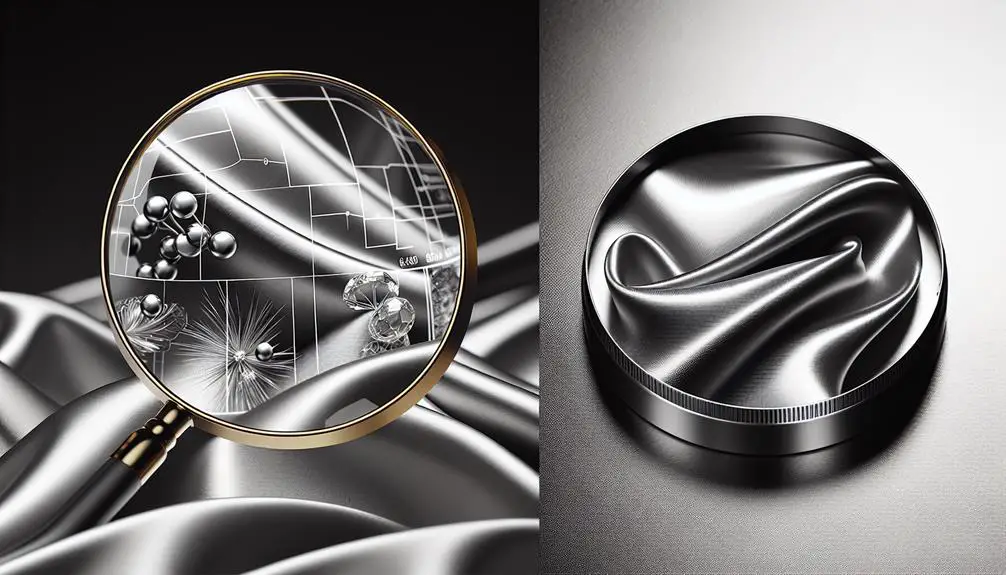So, I've been thinking a lot about satin lately. It's this silky, glossy fabric that feels like luxury whenever you touch it. Most people think it's a material made from silk, but that's not the whole story. Satin actually refers to the weave, not the fiber, and it can be made from silk, polyester, nylon, or even rayon. Each type gives satin its unique characteristics—some are perfect for flowy evening gowns, while others are great for durable bed linens. But here's the kicker: there's so much more to satin than just its smooth surface. Why does its weave make such a difference, and how does it affect its use in fashion and decor? Let's unwrap this mystery together.
Table of Contents
Key Takeaways
- Satin is not a material itself, but a weave that gives fabric a glossy surface.
- It can be made from silk, polyester, nylon, or rayon, offering various feels and qualities.
- Originally, satin was exclusively woven from silk, making it a luxury fabric.
- Synthetic versions like polyester and nylon satin are more durable and easier to care for.
- Satin's unique sheen and smoothness are due to its weaving technique, featuring longer floats of yarn.
Understanding Satin Fabric
Satin, with its smooth and glossy surface, comes from weaving silk, polyester, nylon, or rayon into a fabric that's both luxurious and versatile. This special weaving technique gives satin its unique feel and appearance, making it a favorite for anyone looking to add a touch of elegance to their wardrobe or home. When we talk about satin, we're diving into a world where fabric isn't just material; it's an experience. The silky touch and lustrous sheen aren't just by chance; they're the result of careful craftsmanship and design.
What sets satin apart isn't just its materials but how they're woven together. This weaving technique creates a fabric that not only looks stunning but also drapes beautifully and feels lightweight. It's no wonder satin is a go-to choice for bridal gowns, lingerie, and even athletic wear. Its versatility doesn't stop at clothing; satin also makes for luxurious bedding that turns any bedroom into a lavish retreat.
In essence, understanding satin means appreciating the intricacy of its weave and the quality it brings to various products. Whether it's the silk version that screams opulence or the more accessible polyester blend, satin remains a symbol of sophistication and comfort.
The History of Satin
Exploring the origins of satin, we find ourselves traveling back to ancient China about 2,000 years ago, where this luxurious fabric first came into existence. Initially, satin was a type of silk satin, reserved only for the elite due to its intricate production process and the high cost of silk. It's fascinating to think about how this fabric has been around, adorning the lives of the wealthy and powerful, way before it became a staple in our modern wardrobes.
The journey of satin from an exclusive Chinese treasure to a global fashion staple is nothing short of remarkable. By the 12th century, this luxurious fabric made its way to Europe, thanks to the bustling trade routes that linked the East with the West. The introduction of silk satin to European shores marked the beginning of a new era in fashion and luxury textiles. It was initially so expensive that only the upper classes could afford to wear it, making satin a symbol of wealth and status.
The term 'satin' itself is a nod to its Eastern origins, derived from Quanzhou, a major Chinese port known in medieval Europe as Zayton. This connection highlights the global journey of satin weaves, from their creation in ancient China to their adoption and adaptation in Europe and beyond. The various forms of satin fabrics present in ancient China not only showcase its long history and significance but also the enduring appeal of this luxurious fabric.
Characteristics of Satin
Delving into the characteristics of satin, we'll notice it's not just any fabric; its smooth, glossy surface sets it apart, making any piece of clothing look instantly more luxurious. The satin weave is responsible for that shiny texture we all admire, reflecting light in a way that adds an undeniable elegance to garments. When I think about satin, what hits me first is its lustrous appearance. It screams luxury. This isn't just about looking good; it's about feeling good, too. The fabric's softness and lightweight nature mean it drapes elegantly, hugging the body in all the right places without adding bulk.
Now, consider the iconic evening gowns that grace red carpets. They owe much of their allure to satin's luxurious feel. It's not merely about fashion; it's an experience, a statement. Wearing satin, you don't just look luxurious, you feel it. It's this combination of aesthetic appeal and comfort that sets satin apart in the world of textiles. It's why I, along with many others, hold a special place for satin in our wardrobes and hearts. It's more than fabric; it's a symbol of elegance and luxury.
Types of Satin Weave
So, we're about to explore the world of satin weaves, and honestly, it's pretty fascinating.
From the luxurious origins of silk satin to the modern twists with synthetic varieties, there's a lot to cover.
Plus, we'll get into why these fabrics feel so darn smooth and drape so beautifully.
Silk Satin Origins
Dating back to ancient China, silk satin was first woven from silk fibers, boasting a smooth and glossy surface that set it apart. Here's what makes it so special:
- Silk satin originated in China, a fact that ties its luxurious nature to a rich historical background.
- The smooth and glossy surface isn't just for show; it's the hallmark of its high-quality weave.
- Its production was first rooted in Quanzhou, reflecting a deep cultural significance.
- The unique way satin weave disperses light gives it that unmistakable sheen we all love.
- Not surprisingly, its luxurious and soft feel has made silk satin a go-to for high-end garments.
Honestly, silk satin's blend of elegance and history is what sets it apart in the world of fabrics.
Synthetic Satin Varieties
While we've explored the luxurious world of silk satin, it's important to note that not all satin comes from silk; synthetic varieties like polyester, nylon, and acetate satin also have their unique appeal.
These synthetic satin fabrics bring a lot to the table. Polyester satin, for instance, isn't just easy on the wallet; it's tough as nails too, making it a go-to for projects where durability is key.
Then there's nylon satin, which doesn't just stand up to wear and tear; it laughs in the face of moisture, staying strong and resilient. And don't forget about acetate satin. It's the smooth operator of the bunch, feeling soft against the skin and staying wrinkle-free without a fuss.
Each type of synthetic satin brings its own set of perks, transforming how we think about satin fabrics.
Satin Weave Characteristics
Delving into the world of satin weave characteristics, it's fascinating to see how the unique, longer yarn runs give satin its signature sheen. Understanding that satin is a type of fabric with a high lustre, it's all about the weave. Here's a quick breakdown:
- Longer Yarn Runs: The key to that glossy finish.
- Lustrous Front, Dull Back: A tale of two textures.
- Light Dispersal: Why it catches the eye like no other.
- Types of Satin: From four-harness to eight-harness weaves, each has its own charm.
- Consistency in Weave: Despite variations, the principle of long yarn runs remains a constant.
This complex weave makes satin fabric truly unique, blending beauty with technical craftsmanship.
Common Uses of Satin
Satin's versatility shines through its wide range of uses, from luxurious bridal gowns to comfy bedding. I've seen it transform weddings into fairy tales with its sheen, making bridal and bridesmaid dresses look absolutely stunning. It's not just about the looks, either. The feel of satin against the skin is so smooth and soft, making it a top choice for lingerie. I mean, who wouldn't want to feel that level of comfort every day?
And let's talk about bed linens. Slipping into a bed decked out in satin sheets is like diving into a cloud—pure bliss. It's the perfect way to elevate the everyday into something special. But satin's not just for personal use. I've noticed how interior designers can't get enough of it for curtains and upholstery. It adds a layer of sophistication to any room, catching the light beautifully.
Evening bags made from satin are another favorite of mine. They're the perfect accessory to add a touch of elegance to any outfit. And while I'm all about the aesthetics, I appreciate how athletic wear has tapped into satin's lightweight and moisture-wicking properties. It's amazing how a single material can be so functional across different areas.
Caring for Satin Fabric
Taking care of satin requires a bit of know-how to keep its luxurious feel and look intact. Whether you're dealing with an elegant piece of satin or a comfy sateen blend, the right care is crucial. I've learned that a little attention goes a long way in keeping these fabrics in top shape. Here's my go-to list for keeping my satin looking its best:
- Dry Cleaning: Silk satin? I always dry clean it. Learned that the hard way. Keeps the quality and shine without a fuss.
- Hand Washing: For my synthetic satin items, like those made of polyester or nylon, I stick to hand washing with a mild detergent. Much gentler on the fabric.
- Drying: I never use high heat when drying satin. Always air dry or use the lowest heat setting to maintain that luster.
- Ironing: Ironing satin on a low heat setting and always on the reverse side is my secret to avoiding those pesky shine marks.
- Storage: I've found that keeping satin properly stored is key. Hanging or neatly folding in a cool, dry place does the trick to prevent wrinkles.
Mastering these steps has really helped me keep my satin and sateen pieces looking fabulous.
Satin Vs. Sateen Differences
So, let's get straight into what sets satin apart from sateen, focusing on their weave patterns and how they feel.
I've noticed that the way these fabrics are woven not only affects their appearance but also their texture, which is pretty fascinating.
This difference is why you'll usually find me snuggled up in sateen sheets rather than satin ones for that cozy feel.
Weave Patterns Compared
Why do satin and sateen feel so different, you ask? It's all in the weave. Diving into their weave patterns sheds light on why their fabric texture isn't the same:
- Satin sports a 4/1 weave pattern, leading to those longer floats of warp threads that give off a glossy sheen.
- Sateen opts for a 1/4 weave, favoring longer weft floats that contribute to its uniquely smooth feel.
These weaving patterns are the real MVPs behind their distinct textures and appearances.
- While satin is often whipped up from silk, nylon, or polyester, sateen tends to cozy up with cotton or rayon.
- And yeah, you gotta treat them differently when it comes to care, all thanks to the fibers they're made from and their weave patterns.
Fabric Feel Differences
Understanding the weave patterns of satin and sateen sets the stage for exploring how they feel so different to the touch. Satin, with its tight weave and high thread count, has a smooth, silky texture that's just a treat for the fingers. It's glossy, too, which adds a bit of visual flair to its feel.
Now, sateen? It's on another level of smooth and silky. Imagine satin, but somehow smoother, if you can. It's got a softer sheen compared to satin's glossy appearance, which kinda gives it a luxurious vibe without trying too hard.
The distinct weaving patterns of both fabrics contribute to these textural differences. While I love satin for my outfits and upholstery, sateen wins for my bedding and drapes. It's all about that extra touch of smoothness and comfort for me.
Frequently Asked Questions
What Type of Fabric Is Satin?
I've always thought satin's that smooth, glossy fabric, right? Turns out, it's made from silk, polyester, or a blend. It's got this luxurious vibe because of its shiny surface and the way it drapes.
Is Satin a Polyester or Silk?
I've learned that satin can be either polyester or silk. It really depends on what you're looking for. Silk offers a luxurious feel, while polyester is more budget-friendly and easier to take care of.
Is Satin a Silk or a Cotton?
I've learned satin isn't just one material; it's made from silk or cotton, among others. Silk satin boasts luxury, while cotton satin, often called sateen, offers comfort. It's all about what you're after.
Is Satin Material Good?
I'd say satin material is pretty great. It's smooth, shiny, and drapes well, making it perfect for fancy dresses and comfy bedding. Just gotta care for it properly, but it's definitely worth the effort.
- How Does Ring Spun Cotton Affect Garment Fit and Shape Retention? - August 13, 2024
- What Are the Challenges in Producing Ring Spun Cotton? - August 13, 2024
- Is Ring Spun Cotton Suitable for Plus-Size Clothing? - August 13, 2024






